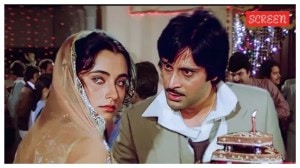Gurez learns to live under Pak fire
Don't stop for a second even if shells rain on you,’’ warns Colonel R.M.S. Rawat of 5 Gorkha Rifles, leading a cavalcade of vehicl...

Don’t stop for a second even if shells rain on you,’’ warns Colonel R.M.S. Rawat of 5 Gorkha Rifles, leading a cavalcade of vehicles carrying armymen and press people from Kopri to the strategic Kanzalwan post, just 400 m from the Pakistan post. As if on cue, a shell lands, just 10 m from his gypsy.
An hour later at lunch, the Colonel is surrounded by his officers. ‘‘Sir, it was a narrow miss,’’ says Major Alex Thomas. ‘‘Ten metres is a big miss, Alex,’’ he retorts, adding it was just a 37-mm shell.
The 3-km stretch of Gurez road, which we have just crossed, is most vulnerable to pounding because Pakistan occupies a post on the hilltop here.
A fortnight ago, 11-year-old Raziya Mir paid with her life crossing the road. Her father, Bashir Ahmad Mir, recalls that the shrapnels of a killer shell pierced her shoulder. ‘‘She died even before we could take her to the hospital,’’ says Mir. As Brigadier Gurmeet Kanwal holds out an envelope carrying some ‘‘token money’’ as compensation, Mir bursts into tears. ‘‘This is how we live and die here,’’ he says. Again, as if on cue, a shell lands on the road outside.
As more shells burst on the mountain opposite this village of Shina-speaking Dards, many run for cover. Some dive into underground bunkers, a novelty for the region. ‘‘They keep on firing day in and day out at our villages,’’ says Brigadier Kanwal bitterly.
Still, Kopri is not as badly affected as Chorwan, Acoora and some Tulail villages, says Ghulam Qadir Mir, whose house’s roof has ‘‘84 holes of all designs’’.
Pointing towards the village lying across the Kishanganga, Mir adds that last year, shells took the life of Mohammad Sultan there, besides crippling Mustafa and Iqbal.
However, Army officers say that unlike elsewhere on the LoC or international border, shelling here is not used as cover to push in infiltrators. Adds Major Ahlawat: ‘‘We killed 35 militants trying to enter last year in this sector and may be they have taken some lessons.’’
Photos





- 01
- 02
- 03
- 04
- 05

























